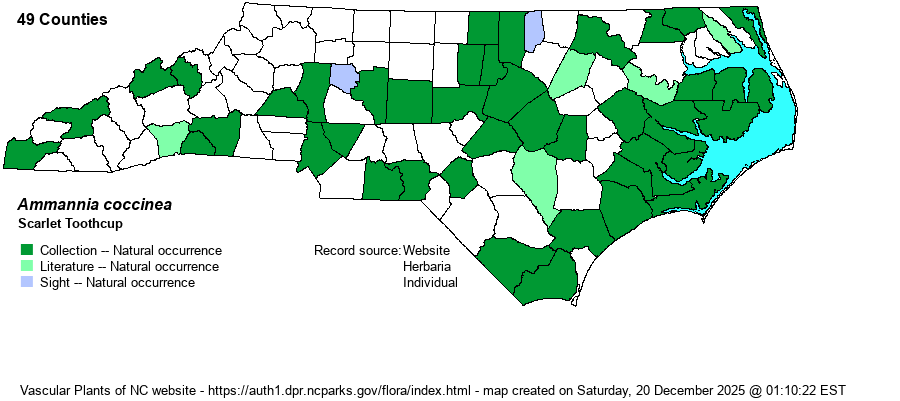| Author | Rottboell | |
| Distribution | Widespread in the outer Coastal Plain; scattered over the rest of the state, apparently absent from the northwestern Piedmont and northern Mountains.
This is a wide-ranging species from coast to coast, though is principally a Midwest species. It ranges from VA and CA south to southern FL and south TX. | |
| Abundance | Uncommon to locally fairly common in the outer Coastal Plain, but generally uncommon and local farther west to Catawba and Polk counties in the southwestern Piedmont. Rare in the central and southern Mountains. The NCNHP's State Rank of S2? is clearly too conservative, and with specimens from about 40% of the state's 100 counties, a State Rank of S4 seems appropriate. | |
| Habitat | This is a wetland species of freshwater places, most often on muddy ground. It occurs in drawdown zones of lakes, ponds, and rivers, in marshes, ditches, and openings in swamps and bottomlands. Despite such numerous habitats, it is not as numerous as might be expected and is not one of the more often seen plants on muddy drawdown zones. | |
| Phenology | Blooms from July to October, and fruits shortly after flowering. | |
| Identification | This herb has often several branches, with the main stem reaching up to about 2 feet tall, rarely to 3 feet tall. The plant has numerous pairs of opposite leaves, each typically horizontally arranged (like a ladder), narrowly oblong to linear, entire, and with an auriculate clasping leaf base. Each leaf is about 3-4 inches long and only about 1/2-inch wide at most. The flowers are in small (3-5-flowered) clusters in the leaf axils, essentially sessile. The flower has 4 petals, each pink to bright purple, but the flower is only about 1/5-inch across. A. latifolia (formerly named A. teres) is quite similar, but it has whitish to more often pale pink flowers that are barely 1/10" across; its calyx lobes are obtuse, as opposed to triangular in A. coccinea. That species is found essentially only in tidal marshes, mostly brackish ones. Do not confuse these with the common Rotala ramosior, which also grows on muddy patches and has similar ladder-like leaves. It has very small white flowers, usually only one per axil, and leaves that taper to the base. | |
| Taxonomic Comments | None
| |
| Other Common Name(s) | Valley Redstem, Purple Ammannia | |
| State Rank | S2? [S4] | |
| Global Rank | G5 | |
| State Status | | |
| US Status | | |
| USACE-agcp | OBL link |
| USACE-emp | OBL link |

